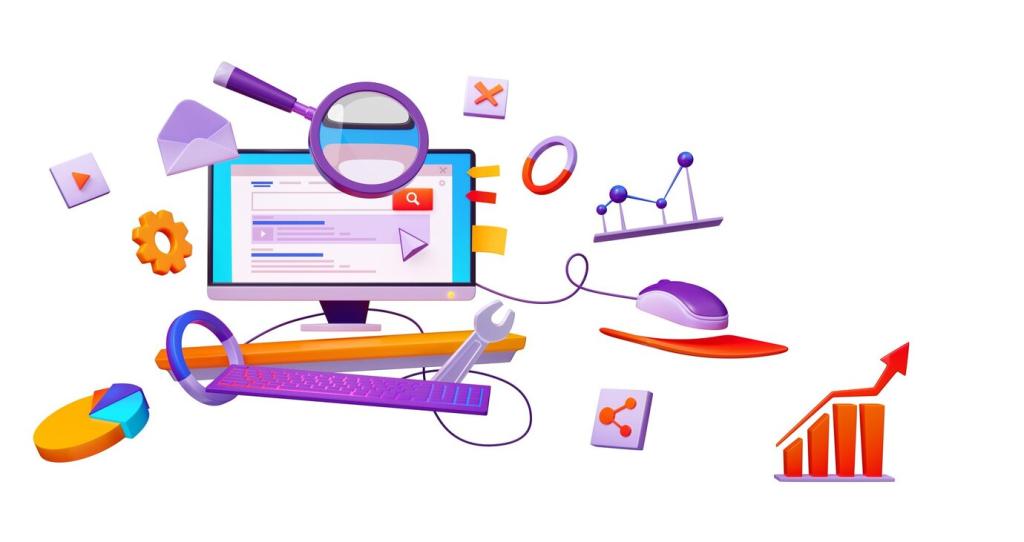Boosting Engagement with Tailored Copywriting for Online Courses
Chosen theme: Boosting Engagement with Tailored Copywriting for Online Courses. Welcome! If you’ve ever felt your lessons are strong but your learners drift away, this space is for you. We translate learner psychology into words that nudge clicks, spark curiosity, and keep students coming back. Subscribe and tell us your biggest engagement challenge—we’ll shape future posts around your needs.
Understand Your Learners: Persona-Driven Copy That Feels Personal
Data Into Personas, Not Stereotypes
Go beyond demographics. Extract patterns from quiz responses, support tickets, and completion logs to uncover how learners decide, stall, and celebrate. Distill those insights into persona snapshots that guide voice, structure, and calls to action without flattening real human complexity.
Motivations, Frictions, and Situations
Map one urgent outcome, three common obstacles, and the real-life context of study—late nights, commutes, or short breaks. Then write copy that anticipates fatigue, offers tiny wins, and normalizes imperfect progress. Invite readers to reply with their learners’ biggest friction for a quick copy tweak.
Voice and Tone by Learning Stage
Match tone to readiness: warm and visionary for discovery, crisp and specific for enrollment, affirming and directive for onboarding. During plateaus, shift to compassionate prompts that spotlight progress. Comment where your learners typically stall, and we’ll suggest message pivots that re-ignite momentum.
Outcome-First, Jargon-Light Headlines
Start with the learner’s desired change, not your course features. Replace technical jargon with everyday language that evokes relief, clarity, or confidence. Test two variations that differ by one element—outcome specificity or time to results—to see which drives more enrollments and starts.
Value Proposition With Proof
Pair the promise with believable evidence: sample lesson clips, anonymized score improvements, or a simple before-and-after checklist. Keep it human. If a testimonial feels too polished, add a candid line about early struggles to make the transformation feel achievable and honest.
Micro-Headlines for Module Pages
Every module needs a mini pitch. Explain why this step matters now and what skill unlocks next. Use action verbs and a time anchor—“In 15 minutes, ship your first draft.” Post one module title below; we’ll reply with a sharper micro-headline to boost click-through.
Storytelling That Drives Course Completion
01
Learner as Hero, Course as Guide
Position the learner’s goal as the quest, obstacles as expected plot points, and your course as the trusty guide. Write lesson intros that acknowledge doubts, offer a small tool, and foreshadow the next win. This keeps momentum anchored in meaning rather than mere compliance.
02
Micro-Stories in Intros and Wrap-Ups
Open with a relatable scene—“On the fifth resume send, Maya stopped hearing back.” Close with a concrete shift—“Her subject line found the right hiring manager.” Invite students to share quick wins in discussion threads; feature one weekly to reinforce identity growth.
03
Emotion With Clarity, Never Fluff
Balance feelings with specifics: name the fear, then show the next doable step. Replace vague encouragement with a checklist and a short example. Ask learners to comment with a thirty-second story of their progress; highlight themes to strengthen a sense of collective momentum.


Onboarding Emails That Spark Early Wins
Send one clear promise, one tiny action, and one friendly invitation to hit reply. Include a two-minute getting-started task that feels doable on a busy day. The goal is momentum, not mastery, so end with a preview of the next nudge to set expectations.
Onboarding Emails That Spark Early Wins
Use subject lines that reference the learner’s chosen outcome—“Two minutes to unlock your first draft.” Inside, show a progress bar, restate the benefit, and link directly to the next lesson. Encourage a quick reply with a one-sentence reflection to keep commitment active and social.
UX Microcopy That Reduces Friction in Your LMS
Action Labels That State the Win
Replace bland buttons like “Continue” with outcome-driven language such as “Practice the skill” or “Unlock your example.” Add a tiny helper line beneath when stakes are high. Clear labels reduce hesitation and increase click-through without adding cognitive overload or clutter.
Empty States That Teach
When a dashboard is blank, explain what will appear after the next action and show a sample. Add a short checklist and a celebratory micro-reward for completion. Students engage faster when the interface gently previews value instead of presenting a quiet void.
Error Prevention Over Error Apologies
Preempt mistakes with inline hints, file requirements, and autosave messages. If an error occurs, offer a one-click fix or a humane explanation. Keep tone calm and constructive. Ask learners to vote on which phrasing felt most helpful; refine copy based on their feedback.

Prompts That Lead to Doing, Not Debating
Design prompts that produce artifacts—screenshots, drafts, or short recordings. Provide a simple structure and an example to lower the bar. Celebrate participation with a weekly roundup email. The visible trail of progress turns lurking into contribution and sustains momentum through tough modules.
Credibility Without Hype
Use modest, specific wins: “Three learners published a portfolio page this week.” Pair numbers with short quotes that describe feelings and next steps. This combination validates effort and sets a believable target for newcomers, nudging them to take the very next action.
A/B Testing and Analytics for Conversion and Completion
Frame changes around a learner belief: “If we promise a visible draft in fifteen minutes, more learners will begin today.” Keep tests small—one headline or one call to action. Document variants, audience, and time window to ensure trustworthy comparisons and useful learning.
